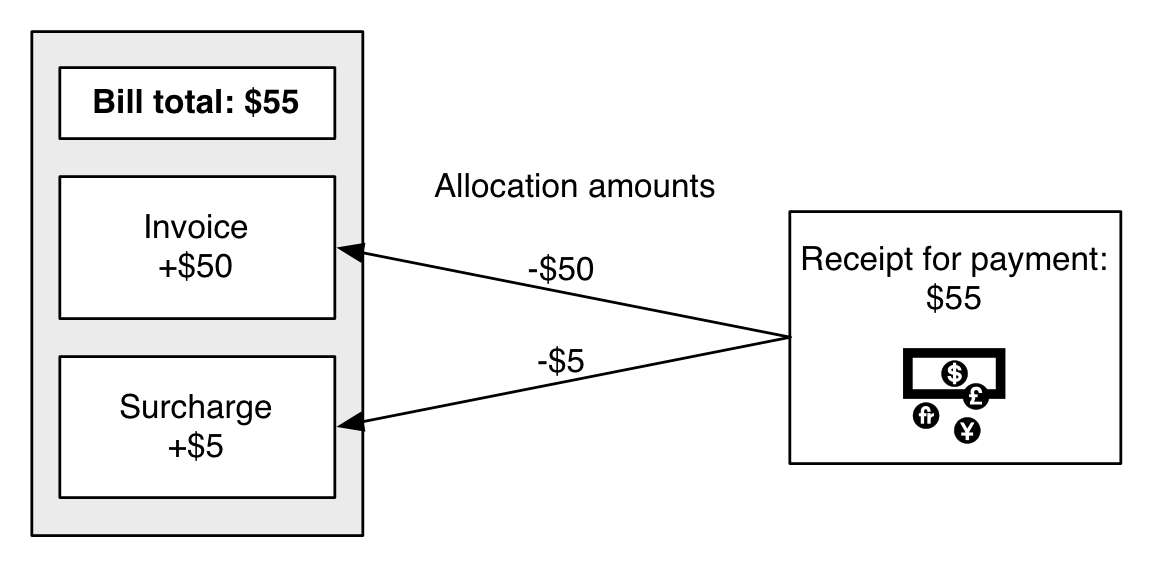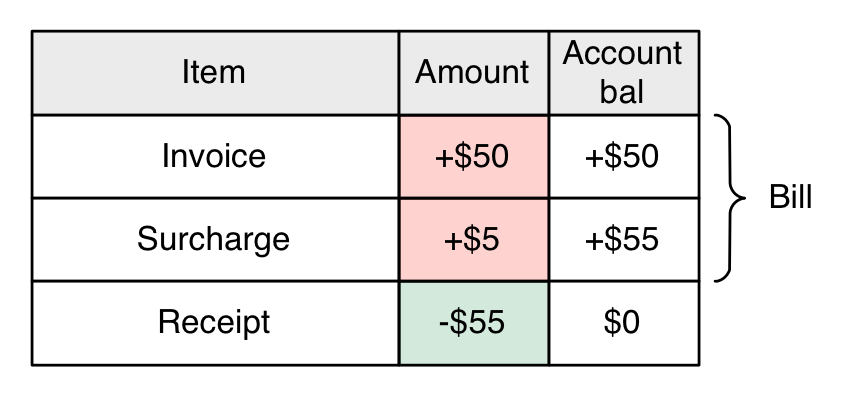Transaction overview
A transaction is a financial event that affects an account. Transactions are the basis of Smile's accounts receivable system. Smile accounts have an account history that lists every transaction raised against each account throughout the account's lifecycle.
Allocated transactions
Because Smile is an open item accounts system, each transaction can be allocated to another transaction. For example, you can allocate a surcharge reversal to a surcharge, and allocate an invoice to a receipt. A receipt is an acknowledgement of a completed payment.
An allocated transaction does not have to pay an open item in full, and a transaction can have more than one transaction allocated to it. For example, a receipt can be allocated to both an invoice and a surcharge, as shown in the following diagram.
Figure: Receipt allocated to multiple transactions

Smile automatically allocates transactions to each other, with some exceptions. For example, Smile automatically allocates a credit card payment to an invoice, but an operator manually allocates a cash payment to an invoice.
Debit and credit transactions
In Smile, credit transactions have negative values because they decrease the account balance, that is, decrease the amount the customer owes. Debit transactions have positive values because they increase the account balance, that is, increase the amount the customer owes.
The following diagram shows you how the credit and debit transactions in the previous example appear on an account balance. In this example, the debit transactions are shaded red and the credit transaction is shaded green.
Figure: Debit and credit transactions

Itemised transactions
An itemised transaction lists the charges within the transaction. For example, an invoice contains a list of the invoice items that make up the invoice balance. An itemised credit lists the credit items within a credit note, for example, a $100 itemised credit may list an $80 refund and a $20 goodwill credit.